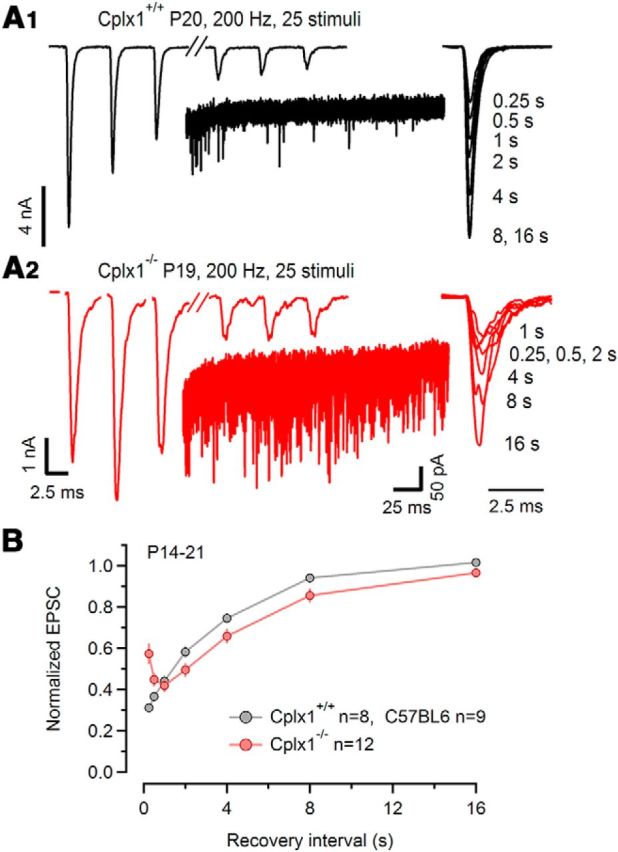Figure 9.

Asynchronously released SVs are recruited from the same pool that is contributing to synchronous EPSCs. Delayed recovery of synchronous EPSCs from depression during stimulus trains in Cplx1−/− calyx synapses. A, Sample traces of conditioning 200 Hz EPSC trains evoked by afferent-fiber stimulation (25 stimuli) that largely depleted the readily releasable SV pool (left) recorded in a P20 Cplx1+/+ synapse (A1) and a P19 Cplx1−/− synapse (A2). Only the first three and last three EPSCs of the trains are shown for clarity. Recovery of the RRP was tested by eliciting single EPSCs after the indicated recovery intervals (250 ms to 16 s; right). Insets, Comparison of asynchronous release during the first 240 ms immediately following the stimulus trains. Four sweeps are shown superimposed. B, Average time course of recovery from depression induced by 200 Hz trains. Peak amplitudes of the test EPSC were normalized by division by that of the first EPSCs of the conditioning trains. Note that maximum depression of EPSC amplitudes is observed after a recovery interval of 1 s in Cplx1−/− synapses, because strong asynchronous release after conditioning trains further augments synaptic depression and delays recovery of EPSC amplitudes in these synapses. Pooled data from 17 Cplx1+/+ and 12 Cplx1−/− synapses.
